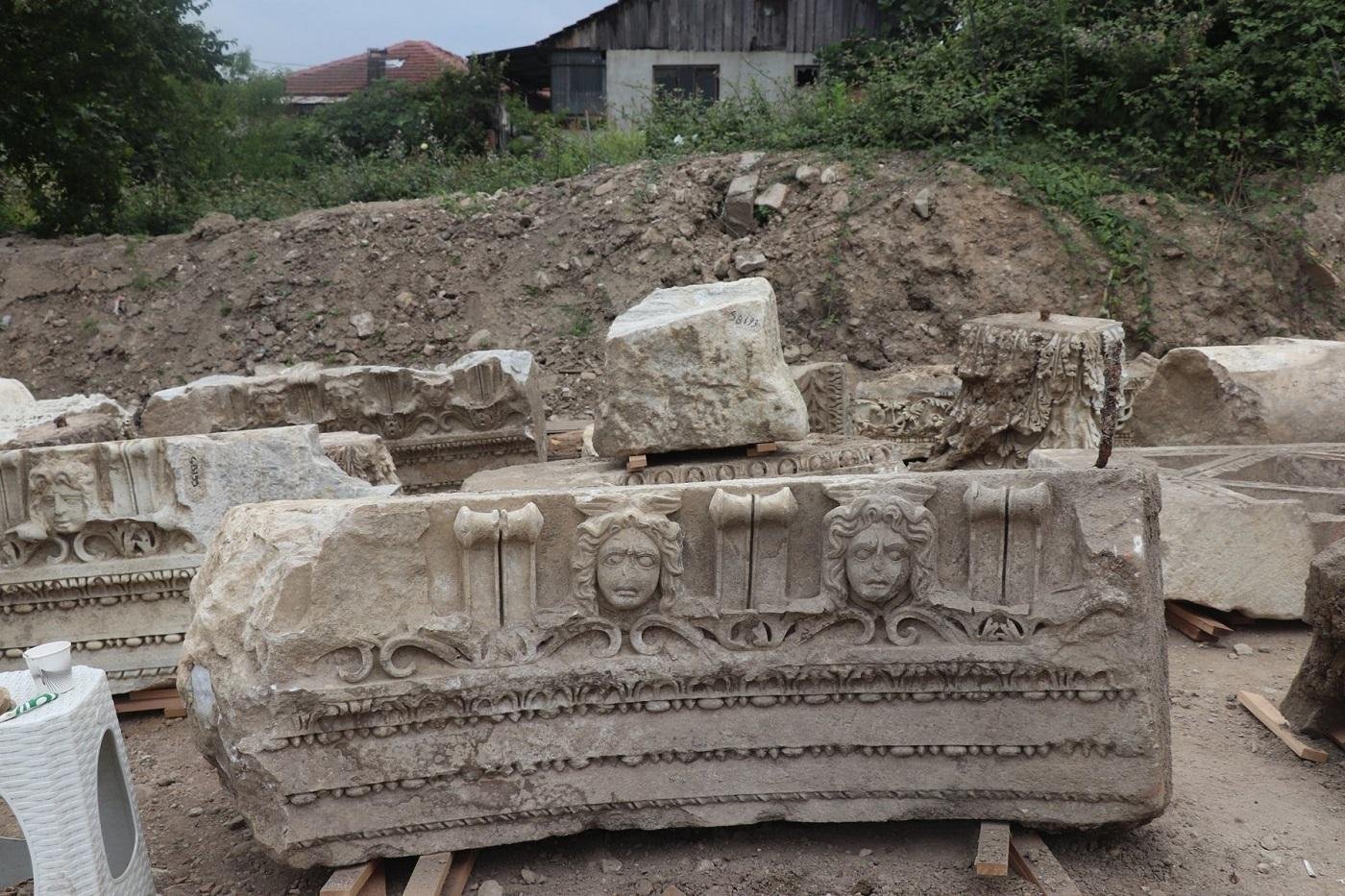Archaeologists discovered marble blocks with architectural figures during excavations in the ancient city of Prusias ad Hypium in the northern province of Düzce, according to Daily Sabah. The objects were discovered in the historic theater’s stage section, which is thought to belong to the Roman period.
 A marble block found in the ancient city of Prusias ad Hypium, Turkey. Credit: Düzce Municipality
A marble block found in the ancient city of Prusias ad Hypium, Turkey. Credit: Düzce Municipality
The digs are attempting to illuminate the region’s history, which began in the third century BC.
According to a statement issued by the Düzce Municipality, several blocks believed to be from the building of the theater stage have been uncovered during archaeological investigations in the ancient city. The most interesting was the block depicting the hunter Actaen, who was killed by his own dogs, angering the Goddess Artemis. It is placed atop a block decorated with floral ornaments.
Archaeologists are restoring the blocks with magnificent embellishments in the orchestra portion of the theater building. Others will be on exhibit in the stone park until the procedure begins.
Earlier, the ancient city of Prusias ad Hypium was known as “Hypios” and “Kieros.” Prusias I of Bithynia captured it, and the people of Bithynia named the city in honor of their king.
However, the city went bankrupt due to the luxurious lifestyle of the citizens. The people of Bithynia bequeathed the kingdom to the Romans, which started the Latin influence on the city. The city was already rich in architecture, but it flourished even more under the Romans.
The city was then captured by the Byzantines and the Ottomans. It was given up to Konuralp Bey, one of the earliest Turkish commanders who helped in the establishment of the empire, by Osman Ghazi, the empire’s founder, under Ottoman control. This is how the region of the city received its current name, Konuralp.





